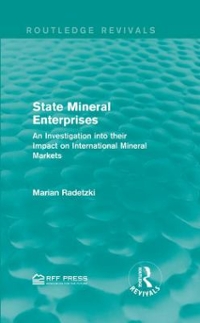Question
There are two (2) parts to this discussion: 1. Discuss the ANALYZE THE ISSUE: The Wreck of Lincoln Savings And Loan. The case of Lincoln
There are two (2) parts to this discussion: 1. Discuss the "ANALYZE THE ISSUE": "The Wreck of Lincoln Savings And Loan".
The case of Lincoln Savings and Loan is a classic example of what went wrong during one of the worst financial crises in U.S. history prior to the banking crisis and Great Recession of 2007-2009. In 1984, the Securities and Exchange Commission charged Charles Keating, Jr., with fraud in an Ohio loan scam, but regulators later allowed him to buy Lincoln Savings and Loan in California. Keating hired a staff to carry out his wishes and paid them and his relatives millions. Keating was also generous with politicians in Washington, D.C. Allegedly, five U.S. senators received $1.5 million in campaign contributions from Keating to influence regulators.
Where did Keating's money come from? It came from Lincoln Savings depositors and, ultimately, from taxpayers because the federal government insures deposits of failed S&Ls. When Keating took over Lincoln, it was a healthy S&L with assets of $1.1 billion. But because of deregulation mandated by the Monetary Control Act and other legislation and the lack of enforcement of regulations under the new laws, many S&Ls plunged into high-risk, but potentially highly profitable, ventures. Keating therefore took Lincoln out of sound home mortgage loans and into speculation in Arizona hotels costing $500,000 per room to build, raw land for golf courses, shopping centers, junk bonds, and currency futures.
In 1987, after it was already too late, California regulators became alarmed at the way Lincoln operated and asked the FBI and the FSLIC to take over Lincoln. Keating responded by contacting his friends in Washington, and the regulatory process moved at a snail's pace. Years passed before the government finally closed Lincoln and informed the public that their deposits were not safe in this S&L. During the time regulators were deciding what action to take, it is estimated that Lincoln cost taxpayers another $1 billion. Ultimately, the collapse of Lincoln cost U.S. taxpayers about $3 billion, making it the most expensive S&L failure of all.
Keating and other S&L entrepreneurs say they did nothing wrong. After all, Congress and federal regulators encouraged, or did not discourage, S&Ls to compete by borrowing funds at high interest rates and making risky, but potentially highly profitable, investments. If oil prices and land values fall unexpectedly and loans fail, this is simply the way a market economy works and not the fault of risk-prone wheeler-dealers like Keating.
In 1993, a federal judge sentenced Keating to 12 1/2 years in prison for swindling small investors. The sentence ran concurrently with a 10-year state prison sentence. The judge also ordered Keating to pay $122.4 million in restitution to the government for losses caused by sham property sales. However, the government has been unable to locate any significant assets. Keating served four years and nine months.
Critics of federal banking policy argue that deposit insurance is a key reason for banking failures. The banks enjoy a "heads I win, tails the government loses" proposition. Several possible reforms of deposit insurance have been suggested. For example, the limit on insured deposits can be raised, reduced, or eliminated. Do you think a change in deposit insurance would prevent bank failures?
2. What is the result of the most recent Federal Reserve change in Monetary policy? Has it helped or hurt the Economy?
Step by Step Solution
There are 3 Steps involved in it
Step: 1

Get Instant Access to Expert-Tailored Solutions
See step-by-step solutions with expert insights and AI powered tools for academic success
Step: 2

Step: 3

Ace Your Homework with AI
Get the answers you need in no time with our AI-driven, step-by-step assistance
Get Started


